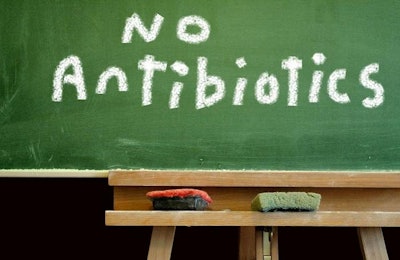
Scientists experimenting with an emerging class of solvents, called supramolecular solvents, believe the substance holds promise as part of a new method to extract antibiotics from animal products.
A research group at the University of Cordoba was experimenting with potential uses of supramolecular solvents when they realized these liquids could be used to remove coccidiostats from food products. When added to a sample in a mixture of an amphiphile, water and a sorbent, the solvents effectively collect the antibiotics and cause them to separate into a liquid layer that floats on top of the rest of the solution.
“All the process requires is two minutes of stirring and 10 minutes of centrifugation,” Soledad Rubio, one of the authors of the study detailing the work in Food Chemistry, said in an email. “as well as minute volumes and amounts of solvents and sorbents, respectively, which renders it simple and fast.”
The unique properties of supramolecular solvents lend themselves to a large number of potential uses, according to Rubio, and have already proved an effective means of extracting contaminants from a variety of food products.
The technique developed for coccidiostats residues is so simple that that any laboratory could implement it without dedicated training, Rubio said. The University of Cordoba team validated the procedure in multiple products, including eggs, milk, beef and chicken, and in all instances the procedure has shown to be much more sensitive than required by EU regulations. Because it uses fewer materials than other widely used techniques, the procedure stands to cut laboratory and production costs. The process also stands to decrease the amount of time required to process samples, according to Rubio.
Like what you just read? Sign up now for free to receive the Poultry Future Newsletter.

















